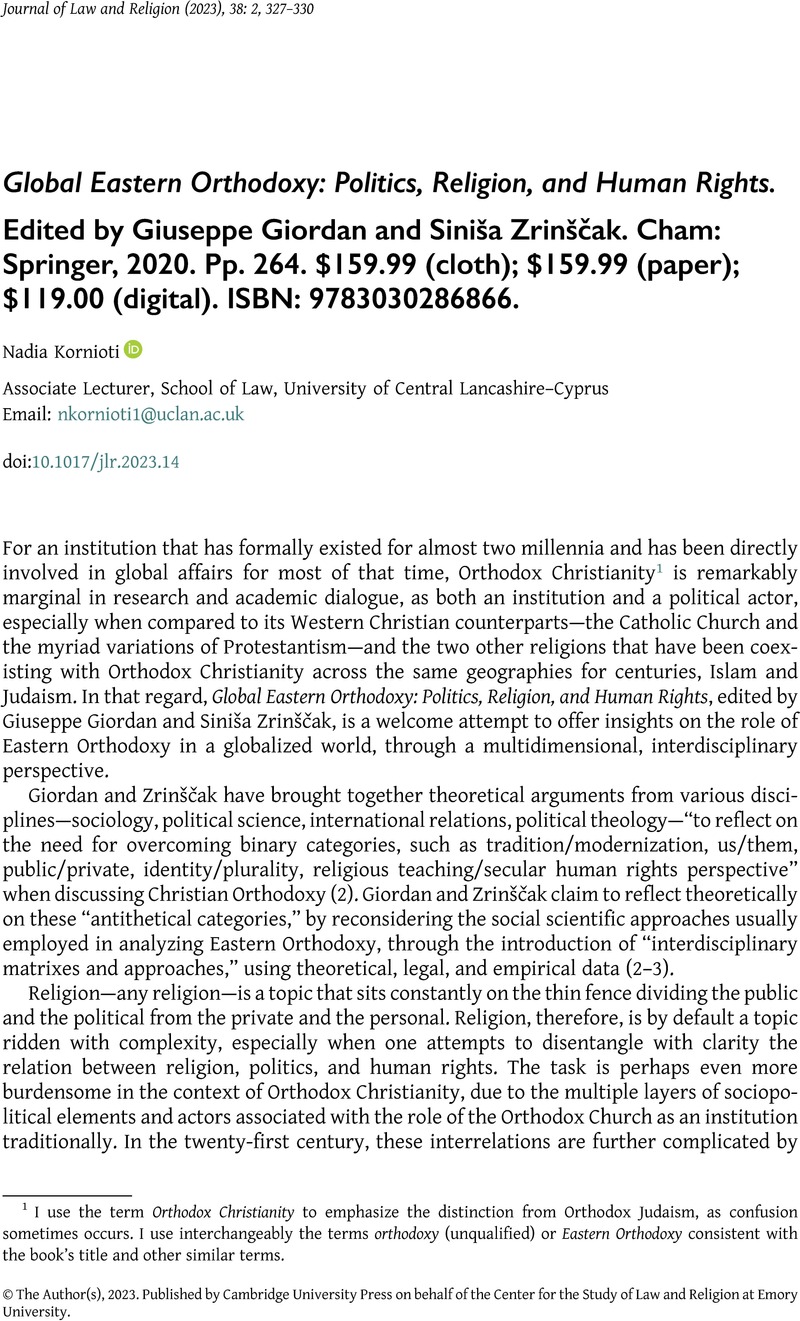No CrossRef data available.
Published online by Cambridge University Press: 20 September 2023

1 I use the term Orthodox Christianity to emphasize the distinction from Orthodox Judaism, as confusion sometimes occurs. I use interchangeably the terms orthodoxy (unqualified) or Eastern Orthodoxy consistent with the book’s title and other similar terms.